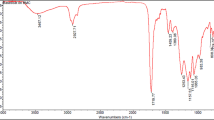Summary
The relationship between exposure to organic solvents and the prevalence of lens changes was studied in a group of 92 car painters and a comparison group of 92 engineers from the Finnish State Railways. Both groups were examined ophthalmologically. Among the 92 car painters, with a mean age of 34.9 years (range of 21–64 years; S.D. 10.4 years), two had been operated on for a cataract and 46 had lens changes, mainly nuclear sclerosis, clefts, lamellar separation, or cortical and subcortical opacities not affecting visual acuity. In 69 age-matched pairs, for whom the factors inducing false-positive results had been excluded, 27 car painters had more lens changes than their age-matched pairs. Lens changes occurred with increased frequency after 10 years of exposure.
Zusammenfassung
Der Zusammenhang zwischen Umgang mit bestimmten organischen Lösungsmitteln und dem Auftreten von Linsenveränderungen wurde bei 92 Autolackierern untersucht. Als Vergleich dienten 92 Lokomotivführer der Finnischen Staatsbahn.
Unter den Autolackierern mit einem Durchschnittsalter von 34,9 Jahren (±10,4 Jahre) waren zwei wegen Cataract operiert worden. Außerdem hatten 46 Linsenveränderungen (Sklerose des Linsenkerns, Wasserspalten, lamelläre Zerklüftungen sowie kortikale und subkortikale Trübungen). Diese waren ohne Einfluß auf das Sehvermögen. Unter 69 dem Alter nach sich entsprechenden Paaren, bei denen auch Faktoren mit falschem positiven Einfluß auf das Resultat ausgeschlossen worden waren, hatten 27 Lackierer mehr Linsenveränderungen als die gleichaltrigen Eisenbahner. Linsenveränderungen kamen nach 10 jähriger Exposition häufiger vor.
Similar content being viewed by others
References
Duke-Elder, W.S.: Textbook of ophthalmology. Vol. XI p. 155. London: Kimpton, 1969
Gehring, P.J.: The cataractous activity of chemical agents. CRC Crit. Rev. Toxicol. 1, 93–118 (1971)
Nau, C.A., Neal, J., Thornton, M.: C9-C12 fractions obtained from petroleum distillates. Arch. Environm. Hlth, 12, 383–393 (1966)
Tengroth, B., Aurell, A.: Retinal changes in microwave workers. Biological effects and health hazards of microwave radiation. Proceedings of an International Symposium, Warsaw 15–18 Oct. 1973
Threshold Limit Values of Airborne Contaminants and Physical Agents with Intended Changes. Adopted by American Conference of Governmental Industrial Hygienists for 1971
Wallace, J., Sweetnam, P.M., Warner, C.C., Graham, P.A., Cochrane, A.L.: An epidemiological study of lens opacities among steel workers. Brit. J. industr. Med. 28, 265–271 (1971)
Author information
Authors and Affiliations
Rights and permissions
About this article
Cite this article
Raitta, C., Husman, K. & Tossavainen, A. Lens changes in car painters exposed to a mixture of organic solvents. Albrecht von Graefes Arch. Klin. Ophthalmol. 200, 149–156 (1976). https://doi.org/10.1007/BF00414364
Received:
Issue Date:
DOI: https://doi.org/10.1007/BF00414364




